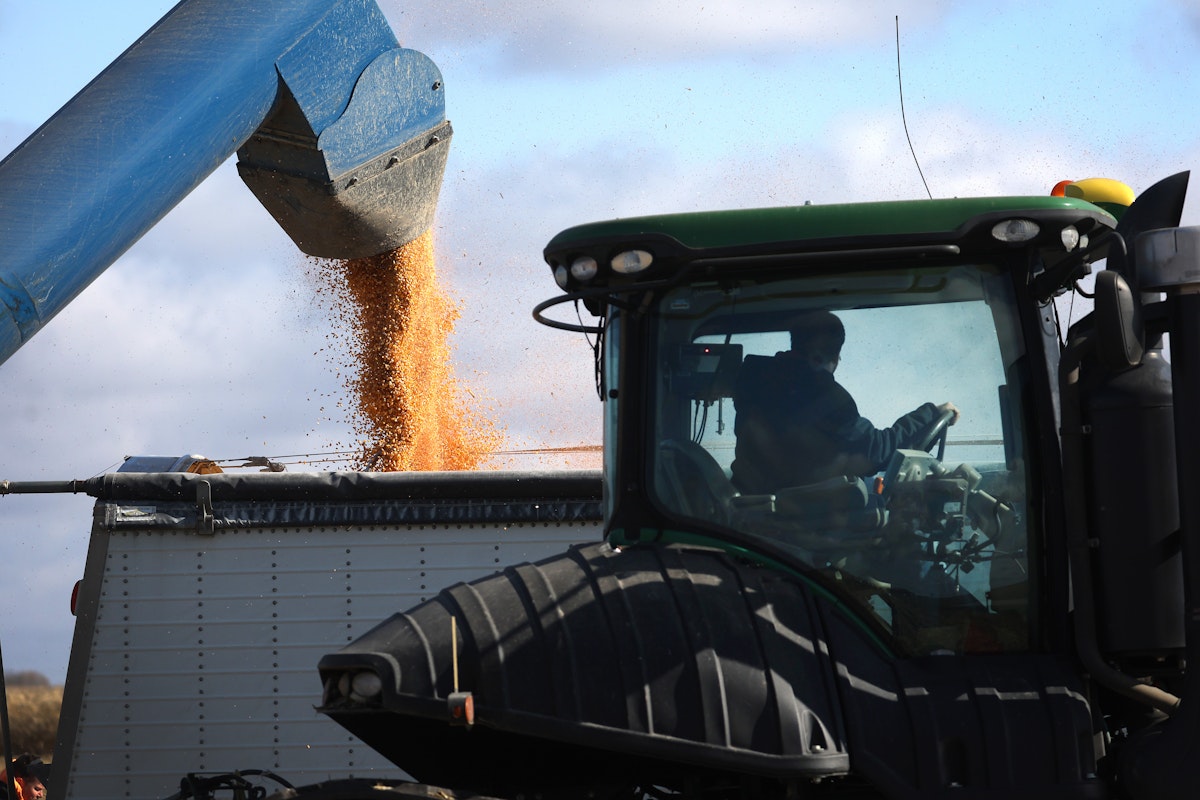
And despite the political marketing, there isn’t much that’s “renewable” about corn-based ethanol, beyond the ability to grow it year after year. Sown in conjunction with soybeans—another industrial crop whose main uses are livestock feed, processed food ingredients, exports, and car fuel in the form of biodiesel—corn requires massive amounts of fertilizers and pesticides, which leach off fields and drive a growing water pollution crisis throughout the corn belt. Meanwhile, planting and harvesting the same two crops at the same time each year leaves the ground unprotected during the spring and early summer, making it vulnerable to erosion as increasingly fierce storms mobilize bare soil. In a spate of recent papers, a team of University of Massachusetts researchers have calculated that about one-third of the corn belt has already fully lost its carbon-rich layer of topsoil—and what’s left is eroding away at a pace ranging from 10 to 1,000 times the natural rate of replenishment. In short, to grow all of that corn, we’re consuming a crucial resource, soil, that’s not renewable at human time scales.
Nor is ethanol doing much to mitigate climate change—and it may actually be helping drive it. From a greenhouse gas emissions perspective, the Renewable Fuel Standard has failed, says Jason Hill, a professor at the University of Minnesota’s Department of Bioproducts and Biosystems Engineering. By displacing a small amount of oil, the law made conventional gasoline a little cheaper, which inspired people to drive more while buying less fuel-efficient vehicles than they would otherwise have. As a result, Hill and two colleagues found in a 2016 paper, the net effect of the law was to boost greenhouse gas emissions from cars by about 22 million metric tons of carbon dioxide annually, equivalent to the output of nearly six coal-fired power plants. Then there’s all the nitrogen fertilizer, which when applied to farm fields emits an annual tsunami of nitrous oxide, a greenhouse gas nearly 300 times more potent than carbon. Hill and his colleagues have found that nitrogen fertilizer applied to corn also results in emissions of ammonia, a powerful pollutant, that have been associated with 4,300 premature U.S. deaths each year.
Rather than hew to this grim status quo, we could generate more—and much cleaner—energy by phasing out ethanol and dedicating a fraction of the land that grows this feedstock to solar panels. For landowners who would be loath to stop farming and become energy producers, there’s no reason to have to choose between the two. A group of researchers at Purdue University have developed P.V. panels designed to work in conjunction with field crops. They go vertical when farm machinery needs to pass, and otherwise adjust to “optimize the amount of electricity generated and the amount of light that crops receive” as the growing season proceeds. The mixing of solar panels and crops—known as “agrivoltaics”—is much more worthy of federal support than ethanol. Why not shift the subsidy from planting corn to installing panels?